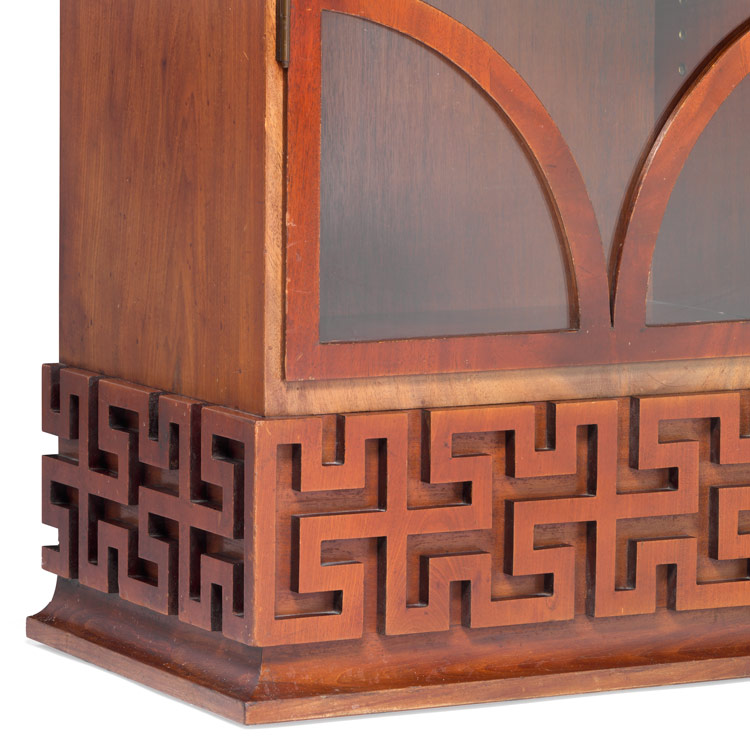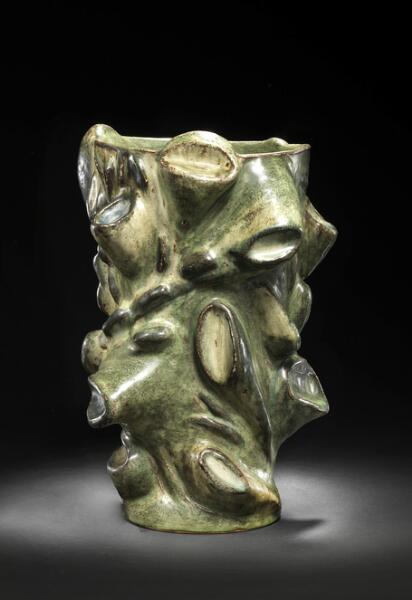Kaj Gottlob's Museum Piece
We look back at the very earliest period in modern Danish furniture design at this year’s final Design Auction in Copenhagen, when we present Kaj Gottlob’s mahogany book cabinet, which he created in 1922.
“With contemporary eyes, it might be hard to view this book cabinet as distinctly modern. Yet, it is proof of a time, where the first thoughts about a new modern direction for Danish furniture design and production took shape in the minds of the Danish architects. Gottlob’ furniture represents one of the earliest formulated Danish answers in the debate about the future of furniture and housing – a debate that took place all over Europe in the wake of the First World War. Seen from an aesthetic and craftmanship perspective, the book cabinet is of a museum quality, and I predict a great level of interest among design enthusiasts all over the world.”
Peter Kjelgaard, Head of the Department for Modern Decorative Art & Design at Bruun Rasmussen.
The Architect of Iconic BridgesEvery day, thousands of Copenhageners cross the bridges of Knippelsbro from 1937 and Langebro from 1954, but few know that the man behind the harbour's old steel bridges and their iconic twisted copper towers is the architect Kaj Gottlob (1887-1976). The two bridges stand as landmarks for the Danish capital’s waterfront area and shows both the architect and the period’s enthusiasm for technical projects, machinery and the functional slogans from the rest of Europe. Gottlob had a remarkable career as an architect – in 1914 he concluded his education at the Royal Danish Art Academy, had his own drawing office from 1920 onwards, functioned as a professor at the Academy, and in 1936 he was appointed Royal Building Inspector. Yet, he is best known for his architecture, which also includes St. Luke's Church in Aarhus, the School at the Sound on Amager and the Brorfelde Observatory near Holbæk. |

|

|
Early Masterpiece from the Mind of GottlobAt the Live Auction for design on Thursday 8 December at 4 pm at Bredgade 33 in Copenhagen, we rewind the clock back to the 1920s and look at another aspect of Gottlob’s work, the furniture design. The piece in question is a three-part unique mahogany book cabinet with semi-circular gable profiles and glass doors with curvy bars. The cabinet was made for the “Danish Arts and Crafts” exhibition in 1922. It was made at a time, when the winds of modernism from Europe were still only on the cusp of sweeping across Denmark and the Danish architects, and with the Romanesque arches we get an insight into Gottlob's fondness for the Neoclassical style in his early years as a furniture designer. During the first part of the 1920s, the cabinet was bought by the chairman of the Danish Medical Association and became part of the interior of a study. However, it is only the cabinet from this set of furniture that has survived the test of time. |

Read more:
For further information, please contact:
|
|
Peter Kjelgaard JensenPeter Kjelgaard JensenHead of department / Modern Decorative Art & Design / København |
